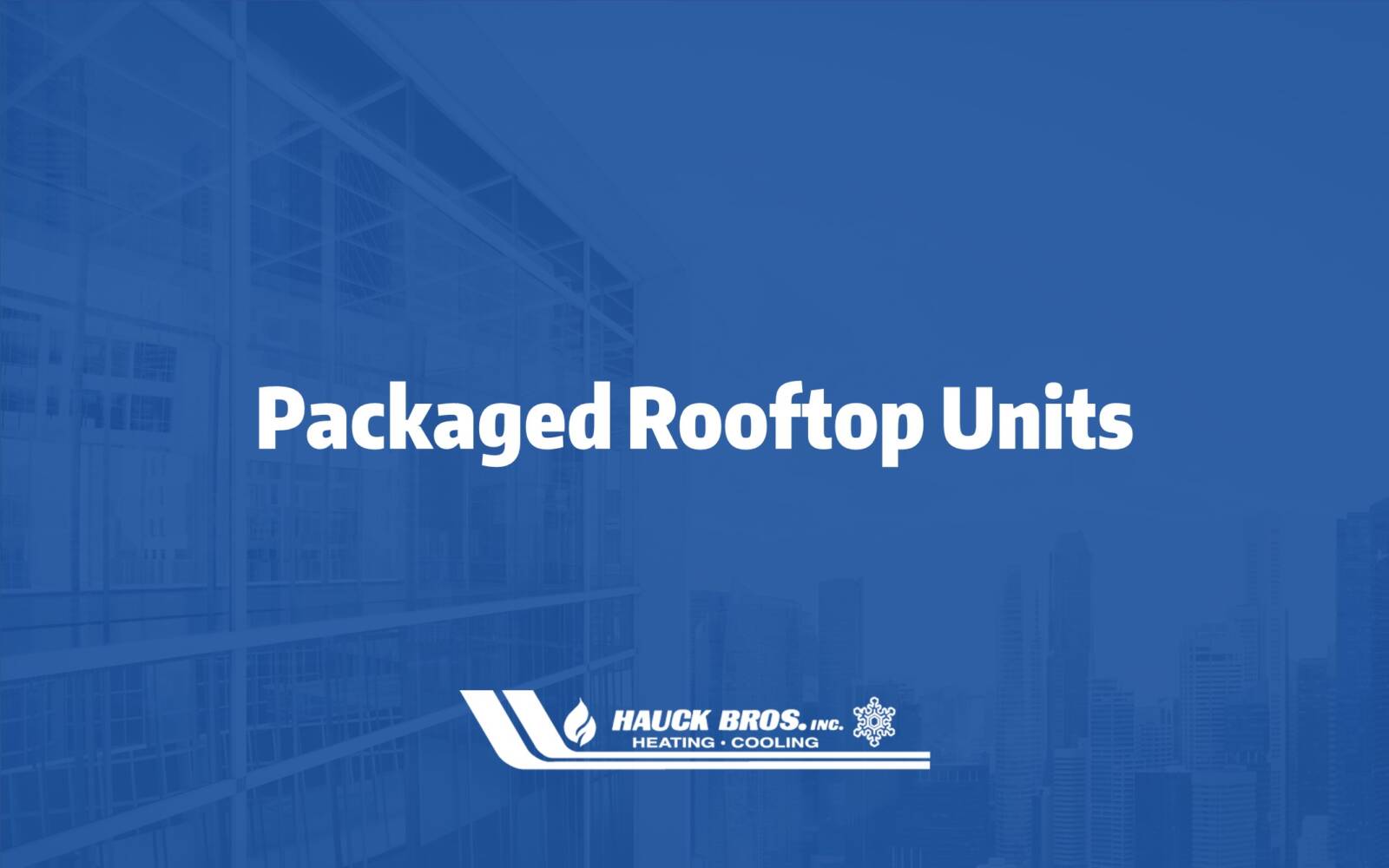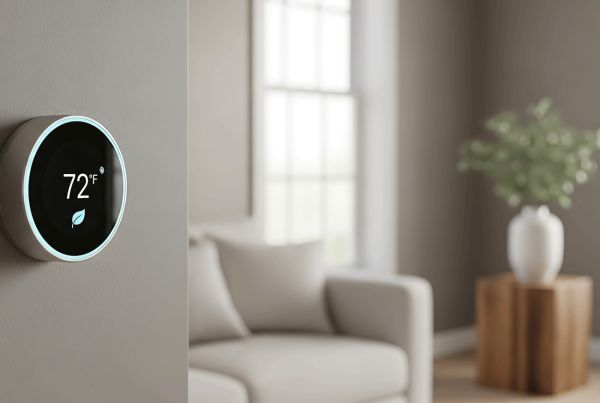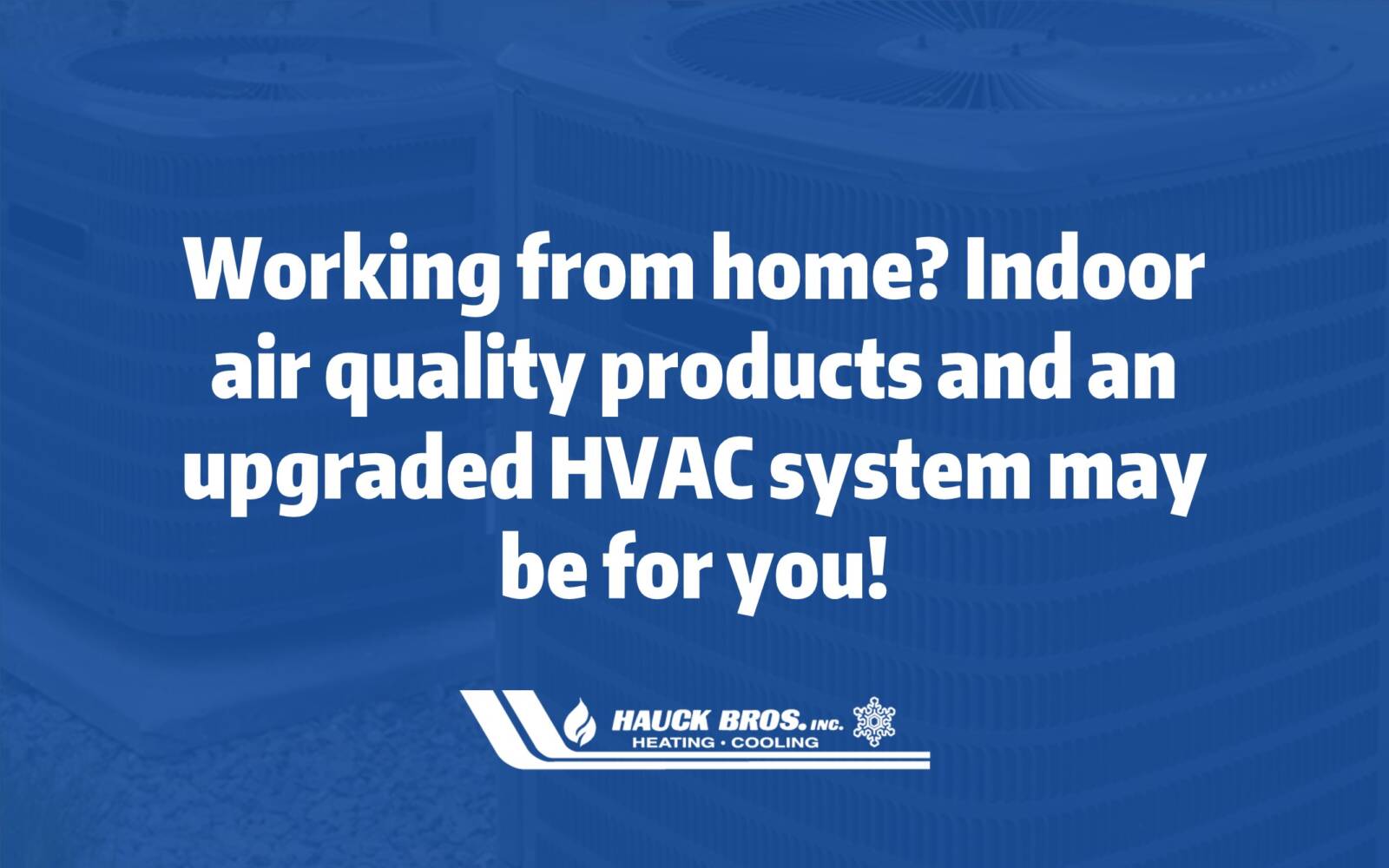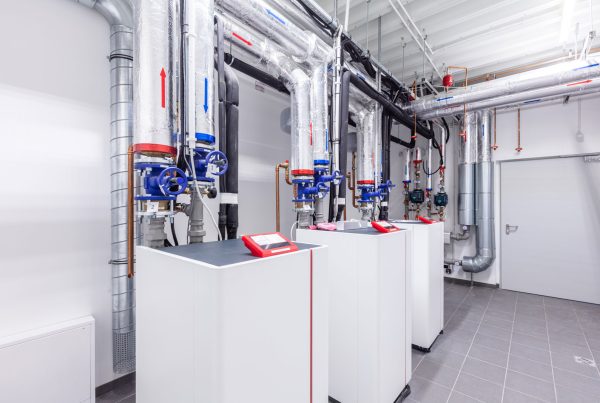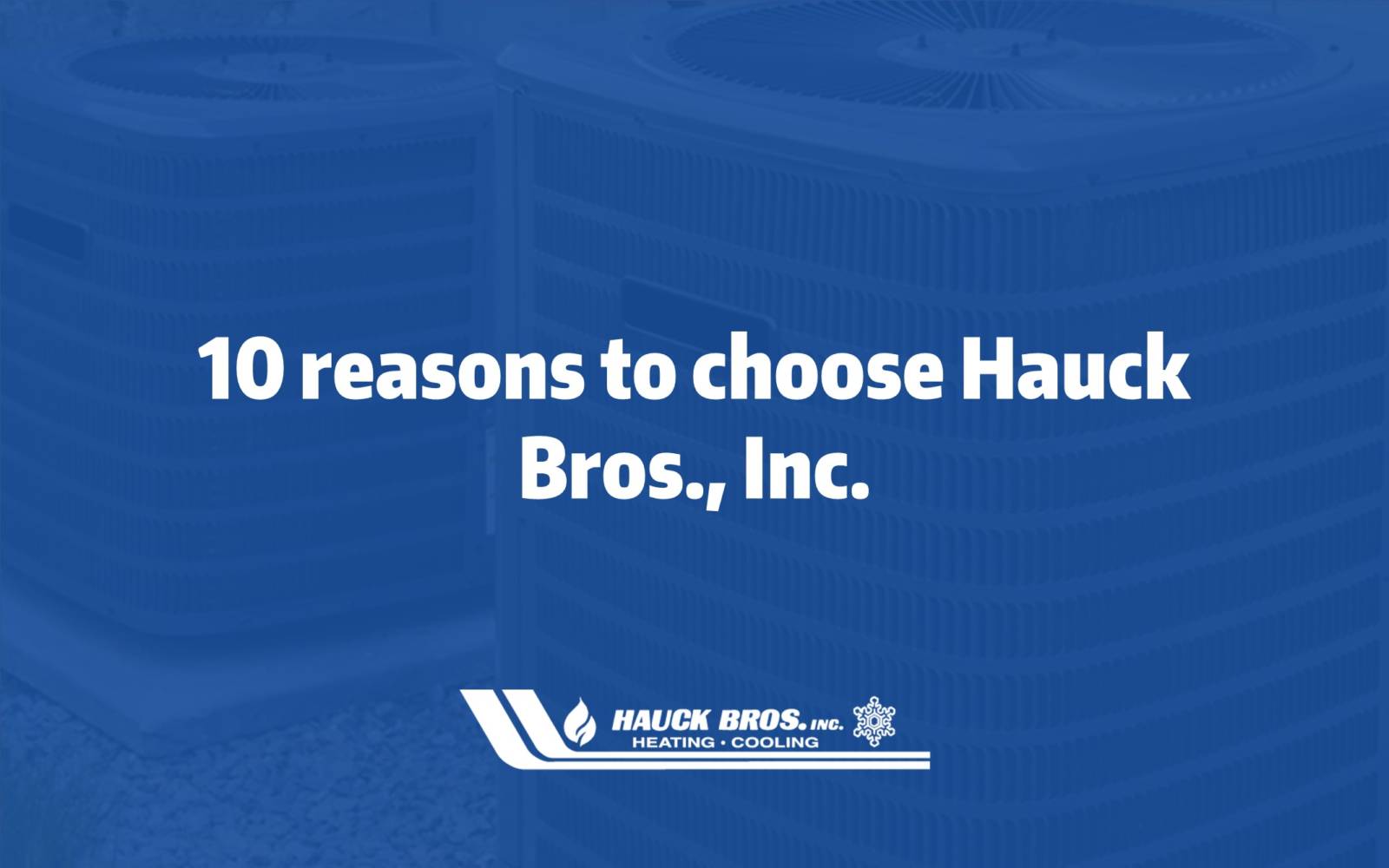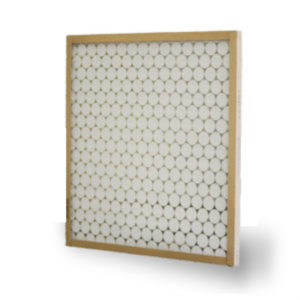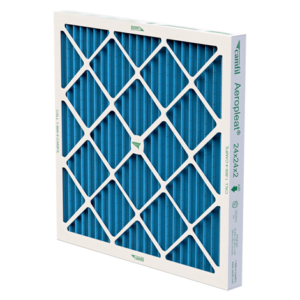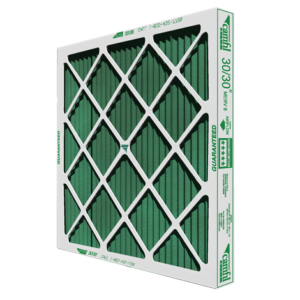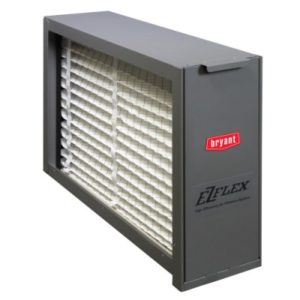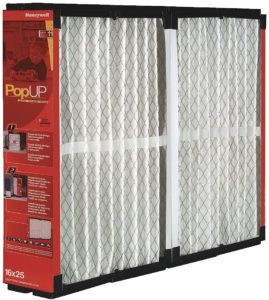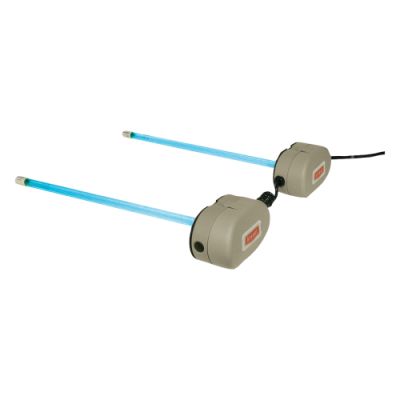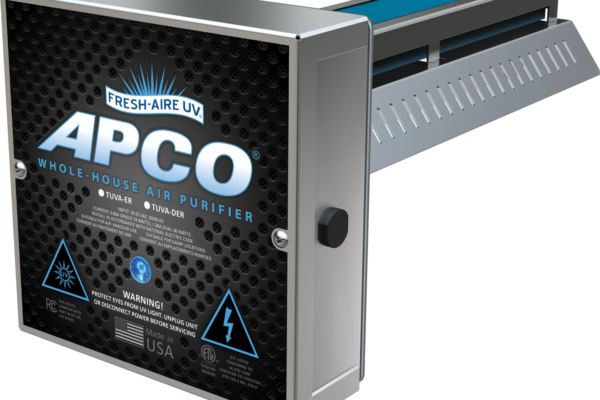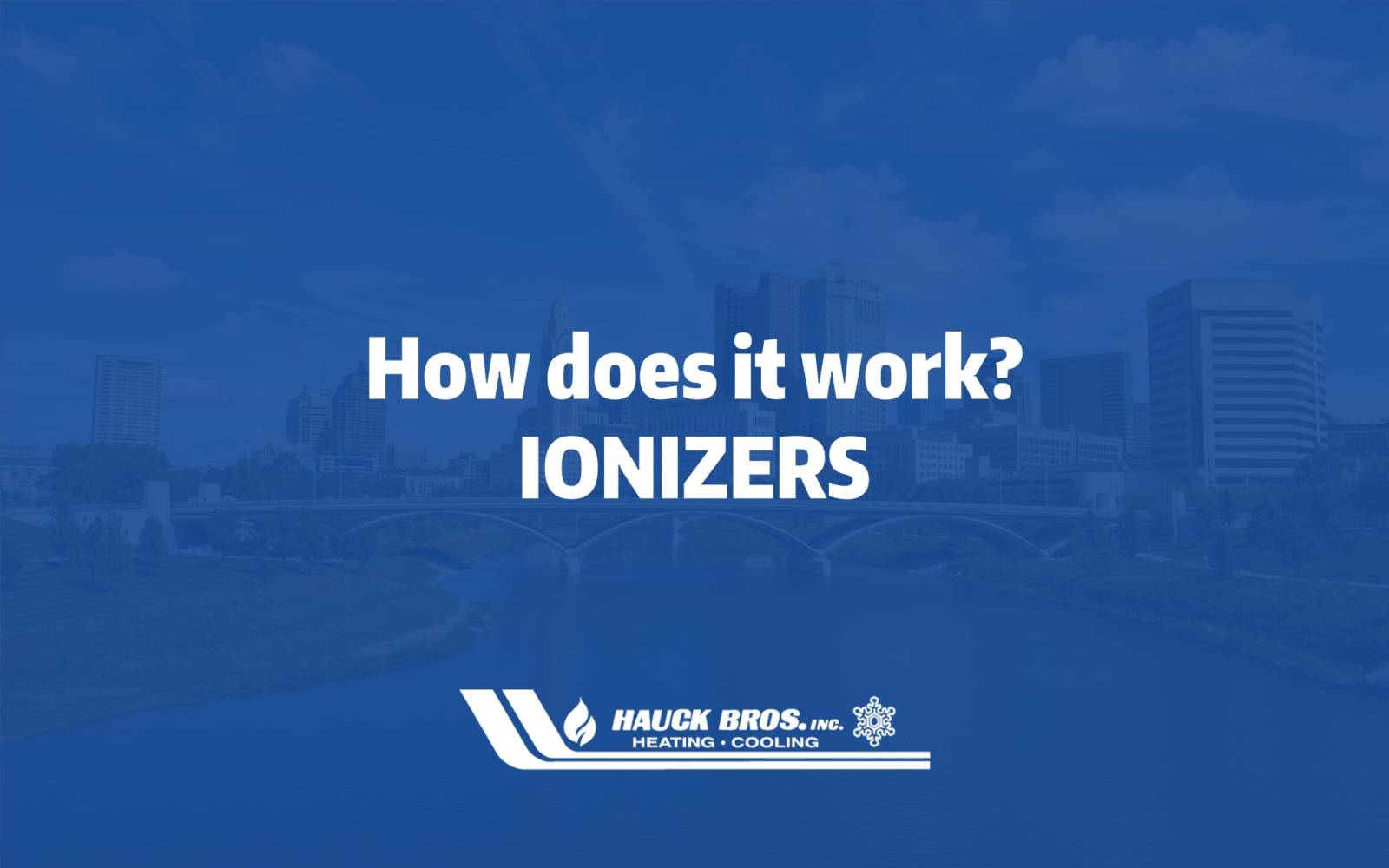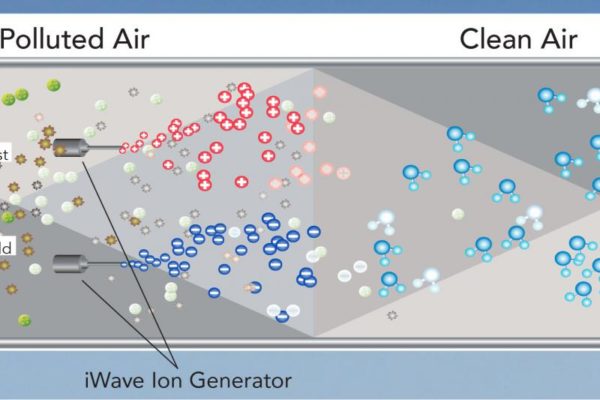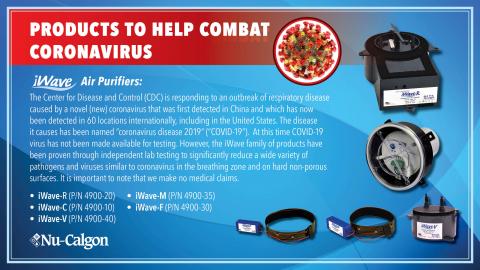iWave-R
Typically used in residential HVAC systems, the iWave-R is the world’s first self-cleaning, no maintenance needlepoint bi-polar ionization generator designed specifically for treating air in residential duct A/C systems. As the air flows past the iWave-R, positive and negative ions actively purify the supply air, killing mold, bacteria and viruses in the coil and living space. The ionization process also reduces allergens, smoke and static electricity, as well as controlling odors (cooking, pet, VOCs) and other particles (no more sunbeams) in the air without creating ozone or any harmful byproducts. These devices emits positive and negative ions, creating a plasma region that actively purifies the supply air, killing mold, bacteria and viruses in the coil and living space by 99%.
iWave-R treats the air in any brand of residential duct air conditioning systems up to 6 tons (2400 CFM) in size with no maintenance and no replacement parts. Designed for universal mounting, the iWave-R typically installs inside or outside of duct, or it attaches magnetically near the indoor fan in the air handler. iWave-R always works at peak performance, producing over 160 million ions/cc, more than any other ionizer product on the market. Its patent-pending self-cleaning design includes a programmable cleaning cycle that can clean the emitter brushes every 1, 3, 5 or 10 days. The iWave-R is factory set to clean every third day, which is adequate for a typical installation. iWave-R does not create “black walls” as negative-only ionizer products will do.
- Patent-pending self-cleaning design ensures ongoing peak performance
- Needle point ionization actively treats air in the living space
- For duct systems up to 6 tons (2400 CFM)
- Universal voltage input – 24VAC to 240VAC!
- Universal mounting with magnets
- Flexible design with no replacement parts
- Kills mold, bacteria and viruses
- Reduces allergens, odors, smoke, static electricity and other airborne particles
- Keeps coil cleaner
- Programmable cleaning cycle
- Alarm contact option for secondary notification
- UL and cUL approved
- Three-year warranty
At Hauck Bros., Inc., we offer the iWave-R, iWave-M, and iWave-C. These ionizers are designed to be set up in most Residential and Commercial HVAC systems including; Gas Furnaces, Oil Furnaces, Air Handlers, Ductless Systems, and light commercial systems up to 12 tons. Call us today or schedule an appointment with an advisor, to learn more about the iWave-R.
Sources:
https://www.iwaveair.com/coronavirus-information
https://news.umich.edu/cold-plasma-can-kill-99-9-of-airborne-viruses-u-m-study-shows/
iWave-C
iWave-C is a self-cleaning, bi-polar ionization generator for actively treating a building’s air quality that does not require replacement parts in a year or two like competing UV lights or other ionizer technologies. In addition, the iWave-C produces and maintains unparalleled ionization output and capabilities. As the air flows past the iWave-C, the device emits positive and negative ions, creating a plasma region that actively purifies the supply air, killing mold, bacteria and viruses in the coil and living space. The ionization process also reduces allergens, smoke and static electricity, as well as controlling odors (cooking, pet, VOCs) and other particles (no more sunbeams) in the air without creating ozone or any harmful byproducts. These devices emits positive and negative ions, creating a plasma region that actively purifies the supply air, killing mold, bacteria and viruses in the coil and living space by 99%.*
Although suitable for residential applications, the original iWave-C is specially designed for light commercial systems up to 12 tons (4800 CFM) with no maintenance or replacement parts needed. iWave-C can be duct-mounted indoors or outdoors, depending on the application. iWave-C always works at peak performance, producing over 200 million ions/cc, making it superior to other market approaches. Special features include a programmable self-cleaning cycle, waterproof housing, digital display (for on-site visual monitoring) and integral alarm contact (for remote monitoring). In the event the ion emitters become damaged or wear out (after years of service), they can be replaced on the iWave-C model.
- World’s first patent-pending self-cleaning design
- Needle point ionization actively treats air in homes and buildings
- Duct-mount install for systems up to 12 tons (4800 CFM)
- Includes waterproof housing for installation indoors or outdoors
- Universal voltage input – 24VAC, 120VAC or 240VAC
- Kills mold, bacteria and viruses
- Reduces allergens, odors, smoke, static electricity and other airborne particles
- Keeps coil cleaner
- Programmable cleaning cycle with digital display
- Integral alarm contact for remote monitoring
- UL and cUL approved
- Three-year warranty
We offer the iWave-R, iWave-M, and iWave-C. These offerings, are designed to be set up in most Residential and Commercial HVAC systems including; Gas Furnaces, Oil Furnaces, Air Handlers, Ductless Systems, and light commercial systems up to 12 tons. Call us today or schedule an appointment with an advisor or to learn more about the iWave-C.
Sources:
https://www.iwaveair.com/coronavirus-information
https://news.umich.edu/cold-plasma-can-kill-99-9-of-airborne-viruses-u-m-study-shows/
iWave-M
Ideal for Ductless HVAC systems, the iWave-M is a flexible ion-generating bar that can treat IAQ in nearly any HVAC application. The air purifier provides the highest level of ionization energy in the most compact size available in the market, producing 240 million ions/cc per linear feet. The highly versatile iWave-M is low maintenance with no replacement parts. As the air flows past the iWave-M, the device emits positive and negative ions, creating a plasma region that purifies the air, killing mold, bacteria and viruses in the coil and living space. The ionization process also reduces allergens, smoke and static electricity, as well as controlling odors (cooking, pet, VOCs) and other particles (no more sunbeams) in the air without creating ozone or any harmful byproducts. These devices emits positive and negative ions, creating a plasma region that actively purifies the supply air, killing mold, bacteria and viruses in the coil and living space by 99%.*
iWave-M’s revolutionary circuit bar with special integrated ion-generating needles fits any HVAC cooling coil up to 36″ wide. The circuit bar is chemical resistant and highly durable for long service life. Plus, it can be folded to length in the field to any size and uses hook/loop fasteners for the flexible bar and power pack for easy installation. It is perfect for ductless HVAC systems – specifically mini-splits, commercial VRF coils, PTAC systems – plus some residential and commercial duct systems, packaged systems, transport cooling coils or even in ice machines. The iWave-M is the most versatile and novel product on the market to address air quality for any HVAC system, in particular to solve mold issues common in hard-to-clean ductless systems.
-
- Special ion needles routed in a flexible bar circuit
- Compact design applicable for HVAC cooling coils up to 36″ wide
- Can flex easily in the field to accommodate virtually any application – ideal for ductless systems
- Chemical and temperature resistant; durable for long service life
- No replacement parts
- Flexible voltage input – 110VAC to 240VAC
- Kills mold, bacteria and viruses
- Reduces allergens, odors, smoke, static electricity and airborne particles
- Keeps coil cleaner
- UL and cUL approved
- Three-year warranty
We offer the iWave-R, iWave-M, and iWave-C. These offerings, are designed to be set up in most Residential and Commercial HVAC systems including; Gas Furnaces, Oil Furnaces, Air Handlers, Ductless Systems, and light commercial systems up to 12 tons. Call us today or schedule an appointment with an advisor or to learn more about the iWave-M.
Sources:
https://www.iwaveair.com/coronavirus-information
https://news.umich.edu/cold-plasma-can-kill-99-9-of-airborne-viruses-u-m-study-shows/
